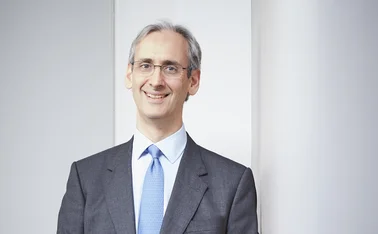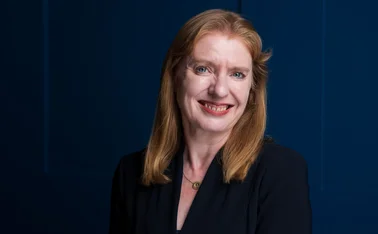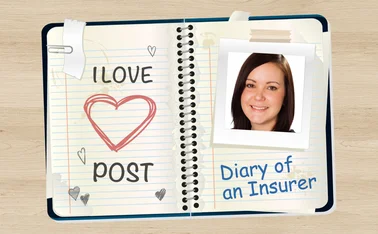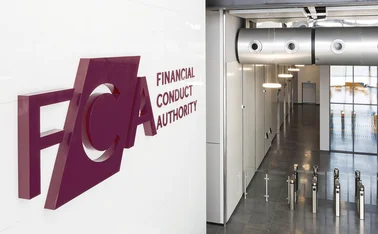
Interview: Steve Treloar and Jon Dye, LV and Allianz

When Allianz acquired 49% of LV’s general insurance business, it set the market talking. Martin Croucher talked to the CEOs of both businesses to chart their progress
It was the deal of the year. But when Allianz announced it was acquiring 49% of LV’s general insurance business late last summer, it caused a flurry of questions from the market.
Did Allianz have the appetite for the kind of risks LV writes on its commercial book? How will LV fare in re-entering the intermediated home market, which it had only just exited?
Nine months on from the deal being announced, Post met top bosses of both business units to hash out those questions and more.
Around the same time, LV had begun inviting renewals for Allianz’s personal lines customers. Steve Treloar, CEO of general insurance at LV, said the process had been relatively smooth.
“We are making good progress,” he said. “We are perhaps further ahead than we thought we would be at this stage, so it’s really good.”
Personal lines
The transfer of business from Allianz to LV will see 2000 broker partnerships move over, of which 160 are new to LV.
The transfer is being done in ‘tranches’ based on software house. The first software house to transfer is Acturis, with around 400 brokers. Others to follow in coming weeks include TGSL and Applied.
CV
STEVE TRELOAR
2016 to present
CEO general insurance
LV
2014 to 2016
Managing director, personal lines
Aviva
2013 to 2014
Managing director, UK direct
Aviva
2013 to 2013
Retail director, UK & Ireland, life and general insurance
Aviva
2010 to 2012
Retail director, UK general insurance
Aviva
2009 to 2010
Managing director, motor
RBS Insurance
2007 to 2009
Commercial director, motor category
RBS Insurance
2007 to 2007
Commercial director, own brands motor
RBS Insurance
2004 to 2007
Commercial director,
Direct Line
1996 to 2000
Senior management accountant
Direct Line
1991 to 1996
Trainee accountant
Coopers Lybrand Deloitte
Treloar said the aim was to not lose any broker relationships in the process. “The key message for brokers is we are trying to make that process as seamless and as simple as possible, and to also ensure that we minimise any disruption caused as a result,” he said.
“We are trying to build a business that makes one plus one more than two.”
He added: “My current understanding is we have not lost any brokers. We have the opportunity to grow our distribution by working with some of the brokers that Allianz was working with that LV wasn’t in the past. We have broadened distribution and broadened products.”
In order to do that, LV has effectively duplicated the underwriting footprint of five of Allianz’s products. “Our intent was to clone the Allianz products, and that’s effectively what we’ve done,” he said.
“We’ve brought in five new products to the market and they will be branded LV but they will be clones of what Allianz is selling.”
He said it was an opportunity to broaden underwriting appetite. “We will take the best of breed underwriting in both businesses and we will use that to inform what we do going forwards,” he added.
Treloar said the transfer of business to LV was likely to be easier than from LV to Allianz. He said: “In many ways it’s a lot easier for us than Jon because the products are more standardised on the personal lines side than they are in commercial lines, hence the reason we are able to do it so quickly.”
Commercial changes
The transfer of commercial lines business from LV to Allianz is expected to start in the third quarter of this year. It is the area of the deal that has raised the most eyebrows in the market.
According to brokers, LV has historically had a different underwriting approach to Allianz, with many predicting Allianz would go through LV’s commercial book with a fine toothcomb.
In August last year Simon McGinn, general manager for commercial and personal at Allianz, admitted that not everything would fit.
“We would be bonkers, for want of a better word, to try and shoehorn everything that LV has got in its commercial book into the Allianz appetite because we know some of that won’t fit,” he told Post at the time.
In the joint interview with Treloar last month, Jon Dye, Allianz UK CEO, said the company was looking to broaden its underwriting appetite as much as possible.
He said: “We are building some new products, in areas where we haven’t traded before like taxi and truck. For the rest of the estate, we are working on our acceptance criteria so our footprint is expanded to match the LV footprint as far as we can.
“We will be pushing out both in terms of distribution – the brokers we will be trading with – and our underwriting footprint and acceptance criteria, in order that we maximise the opportunity. And it is a big opportunity. It’s not very often you get to trade in substantial new portfolios like this.
“We are building new products in some areas, which are based very much on the LV model. For the rest of our products, we are playing with the acceptance criteria to get them in effectively the same shape.”
CV
JON DYE
2013 to present
CEO
Allianz UK
2007 to 2013
General manager, retail division
Allianz
2003 to 2007
Director of claims
Allianz
1998 to 2003
Casualty & speciality claims manager, then European claims manager, then UK & Ireland claims manager
Chubb
1989 to 1998
Management trainee and London claims manager
Commercial Union
Dye said the acceptance criteria changes are likely to be based on individual products. He added: “When you get down to specifics like how we change the underwriting criteria in commercial, that’s a matter for our commercial underwriters, not for me.
“We both employ lots of talented experienced people, so we let them get on with it.”
Allianz will gain a £250m commercial book from LV, and is currently negotiating new agencies with 168 brokers.
Dye added: “We will be writing out to a bunch of new brokers with trading agreements between them and Allianz. We will be trading with some new friends that come across from their trading relationship with LV.”
Dye said there were technical challenges, particularly in IT. “There’s a job to be done in that we need to make sure our existing platform can accommodate the new products and we can get the changes to the underwriting criteria into the new platform,” he said.
“There’s less standardisation in commercial, so it’s a slightly bigger task than would be true of car and home. Having said that, we are very confident that we will be rolling in the third quarter and we’ll have a solution that will make it very easy for brokers to interact with us.”
It is not only Allianz broadening its underwriting footprint. LV exited the intermediated home market on 1 April last year, after suffering heavy underwriting losses, followed by a “forensic review” of its book.
In its 2017 results, the company disclosed it had reduced broker premiums by £32m from £668m to £636m.
As a result, LV Broker’s combined operating ratio – before the impact of claims margin strengthening – improved to 93.7% from 99.3% in 2016, excluding the Ogden discount rate impact in the prior year.
Impact of history
In April, Treloar said LV would proceed cautiously when taking on home business. He said at the time: “We will see how the business performs and take appropriate action as we see how the market is acting.”
However, Allianz has seen consistently profitable personal lines business. In the first quarter of the year, Allianz saw its personal lines COR improve to 93.9% from 97.9% over the same period last year. The result was largely due to a highly successful year at personal lines division Pet Plan, which will stay within Allianz rather than being transferred to LV.
In numbers
Allianz gains £250m commercial book from LV
49% The stake Allianz acquired in LV
160 New broker partnerships for LV
£2.2bn The war chest Allianz has
However, Dye said the home and motor book remained profitable. “We have done a lot of work on those portfolios,” he said.
“We have dramatically upskilled the technical performance of those portfolios. I’ll be very confident that what we’re handing over to Steve is going to be in very good shape. It’s a very neat fit.”
Treloar said there were opportunities in terms of broker panels. “We have a range of partners that come across with the Allianz deal which we weren’t working with before,” he said.
“There are books of business that transfer in. They worked with a different group of brokers and, perhaps in home, a wider group too. That does bring opportunities. In the home space, brokers tend to operate with relatively small panels, so if you’re not on a panel, you’re not there. This brings us some opportunities we didn’t have in the past.”
He declined to say whether commission rates were lower for brokers Allianz was working with on home.
He said: “It’s fair to say there’s a blend. I wouldn’t say one was higher or lower. The blend of commission versus loss ratios needs to be thought through in the round.
“We’re quite keen, we will approach this market cautiously, because it’s a market that is highly competitive right now. The margins are fairly thin. We start from a good place, and we start with a sizeable home business at the same time. It’s not as if we don’t have the underwriting power and insight in order to make this a success. We expect to be able to make it a success.”
Back in 2016, Allianz Group had a £2.2bn war chest and was at one stage rumoured to be looking at US property and casualty insurers for deals – in particular XL Group.
It was around the same time, in summer 2016, that Allianz UK began looking at LV’s GI unit.
Dye said: “Back then, there were some preliminary discussions about how this would work and whether it was something we wanted to do. At the back end of that year, it turned itself into some discussions in London and in Munich, where we started to think a little more closely about how we would set this all up.
“We ran through some different options. At the beginning of last year, that turned itself into some more focused work, where more information was exchanged. That led to the signing, which was on 4 August.”
Dye said the impetus for the LV deal had come from a confluence of both UK and group level demands.
He added: “The group has always been very keen for us to expand our business in the UK. We have been looking at various ways to achieve that. The idea that we could partner with a great business like Steve’s was clearly one way we could do that.
“The group strategically has been wanting to grow, so we in the UK have been looking at different ways to be able to do that. It’s something that is coming from both sides.”
The deal also didn’t require any additional borrowing, he said. “The funds for this particular deal, most of the money came from group,” he added. “The group has an M&A unit based in Munich, which is running the rule over all the deals we are considering around the world.”
Treloar said the sale also fit neatly the circumstances of LV owners, the Friendly Society.
“From a Friendly Society perspective, the business is very successful and has been for the past 10 years,” he said.
“We have great performance and growth. There were capital challenges that arose for the group as a result of the more challenging environment for the life business. Solvency II has been a challenge for all life insurers because it forces recognition of future liabilities. What has really challenged life insurance though is the low interest environment.
“An opportunity came which looked like a good one and which helped the Friendly Society address capital challenges.”
Dye said Allianz at a group level still had a war chest, and didn’t rule out the possibility of future UK acquisitions.
He added: “The group has held a fund to look at acquisitions over the past five years. That’s still true, so the money would still be there if there were other opportunities.
“But the question is you’ve got to find the right target at the right price. That is not an easy thing to do in insurance right now. The group is still in a position to fund other deals but it is going to choose the right company to partner with at the right price.”
He declined to comment on whether Axa’s purchase of XL at €12.4bn (£10.8bn) was the right price.
Insight of the other side
One of the most unusual aspects of the deal is that it empowers both Dye and Treloar to get a look under the bonnet of a rival insurance company.
Dye said: “It’s been fascinating. It’s not often you get to step into what was only a few months ago a competitor organisation.”
Treloar too has visited the Allianz operation in Munich several times, and said it had left an impression.
“The biggest difference is the scale of the organisation,” he said. “One is a reasonably large national provider of insurance. The other is a global business.”
In terms of the transfer of business, it is a relatively complicated process, involving teams not only in LV and Allianz UK, but the Friendly Society and Allianz Group in Munich.
With so many moving parts, do Treloar and Dye have to resist the urge to micromanage the transition?
“There are only so many hours in the day,” said Treloar. “And let’s be honest, it’s not really mine or Jon’s jobs. We have great people who can do that.”
Dye agreed: “There is appropriate governance and reporting. We both employ lots of talented experienced people, so we let them get on with it.”
Only users who have a paid subscription or are part of a corporate subscription are able to print or copy content.
To access these options, along with all other subscription benefits, please contact info@postonline.co.uk or view our subscription options here: https://subscriptions.postonline.co.uk/subscribe
You are currently unable to print this content. Please contact info@postonline.co.uk to find out more.
You are currently unable to copy this content. Please contact info@postonline.co.uk to find out more.
Copyright Infopro Digital Limited. All rights reserved.
As outlined in our terms and conditions, https://www.infopro-digital.com/terms-and-conditions/subscriptions/ (point 2.4), printing is limited to a single copy.
If you would like to purchase additional rights please email info@postonline.co.uk
Copyright Infopro Digital Limited. All rights reserved.
You may share this content using our article tools. As outlined in our terms and conditions, https://www.infopro-digital.com/terms-and-conditions/subscriptions/ (clause 2.4), an Authorised User may only make one copy of the materials for their own personal use. You must also comply with the restrictions in clause 2.5.
If you would like to purchase additional rights please email info@postonline.co.uk








